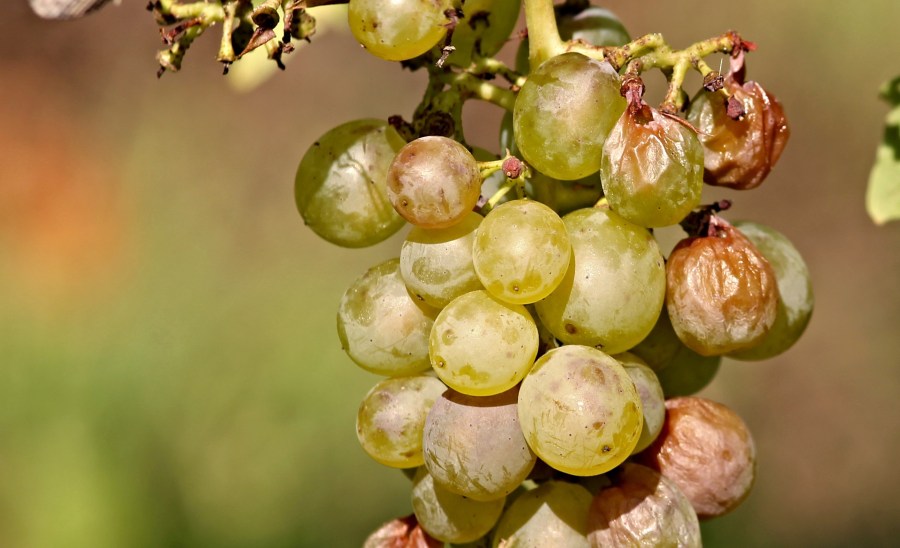Fresharom protects the wine from the negative impacts of oxygen on colour and aroma.
Key impacts
υ Specific preparation of inactivated yeast with high protective power, for aroma preservation in white and rosé wines, thanks to its unique reducing metabolite composition, allows the yeast to assimilate glutathione precursors (cysteine, N-acetyl cysteine) during AF, and therefore boosts wine glutathione content.
υ Protects the aromatic potential of the wine and significantly delay the appearance of oxidative notes (ageing aromas: sotolon and phenylacetaldehyde).
υ Inhibition of browning pathway.
υ Favours yeast nutrition during alcoholic fermentation.
υ Allows more aromatic sparkling wines with better cellaring potential.
υ Thanks to its composition, Fresharom® participates actively to the bubble finesse and foam persistence.
What is happening and why is it so effective and suitable for your wine?
Adding Glutathione during tirage or alcoholic fermentation can inhibit reactions in the wine that can have negative impacts on the organoleptic results both visually and taste/aroma. Glutathione is an abundant compound present in many organisms, such as the grapes itself and is a powerful anti-oxidant. Levels of Glutathione can be variable in grapes/must and harvesting techniques (machine harvesting is the most detrimental) can have a significant impact on the Glutathione content. Boosting Gluthathione through that addition of Fresharom can be a natural way to help protect your wine.
Browning reaction from oxidation
Browning is an oxidative process occurring during the vinification of wine that detracts from its sensory properties of appearance, aroma, and flavour. Phenols are responsible for the oxidative browning in wine. Browning can be a result of enzymatic oxidation, which almost entirely takes place in grape must, and nonenzymatic oxidation, also called chemical oxidation, that occurs predominantly during wine aging. In addition, polymerization reactions between phenols and other wine constituents, including acetaldehyde and glyoxylic acid may also give rise to browning pigments. Fresharom at the juice and at alcoholic fermentation can help mitigate the browning risk although it is not a substitute for proper phenolic management through fining or otherwise.
Phenolics, Quinone formation and Fresharom
The main phenolic compound, which is normally oxidised in white juice, is caftaric acid to the corresponding caftaric acid quinone. Glutathione can prevent quninone formation that is often the key negative compound in a bitter wine. As a tri-peptide consisting of three amino-acids: glutamate, cysteine and glycine, it is most functional in the reduced form, GSH formed when using Fresharom. The GSH traps the quinones in a colourless form and the formation of brown polymers is limited. The mechanism in which GSH works is by reducing the oxidised quinone form to a stable grape reaction product, most likely due to the free sulfhydryl moiety (SH).
Impact of Fresharom on aroma compounds (see below graph)
Esters and terpenes
Terpenes and esters are key wine aromas. Esters of higher alcohols and ethyl esters positively contribute to wine quality by imparting fruity aromas from the alcohol fermentation. Terpenes, such as linalool, α-terpineol and geraniol, impart floral, rose-like and perfumed characters in wine. Fresharom reduces the degradation of these volatiles during wine storage, especially in lower sulphur dioxide wine (circa 20mg/l free SO2). The protective effect of GSH on esters and terpenes during wine storage.
Volatile thiols
Desirable aroma compounds in wine such as key Thiols like mercaptohexylacetate (3MHA) are particularly susceptible to oxygen and quinones formed during the oxidation of the phenolics, which are highly reactive with thiols. GSH, also a thiol, outcompetes to react with quinones and is sacrificial, leaving the positive thiol aromas to remain unbound and contribute positively to the wine aroma.
Hydrogen sulfide (H2S)
High levels of H2S contributes to the “reductive” off-flavour in wine that is unwanted in all stages of winemaking. It is important to note the anti-oxidative effects of Fresharom, if overused may lead to more reduced characters so it is important to follow guidance and recommended technical sheets.




